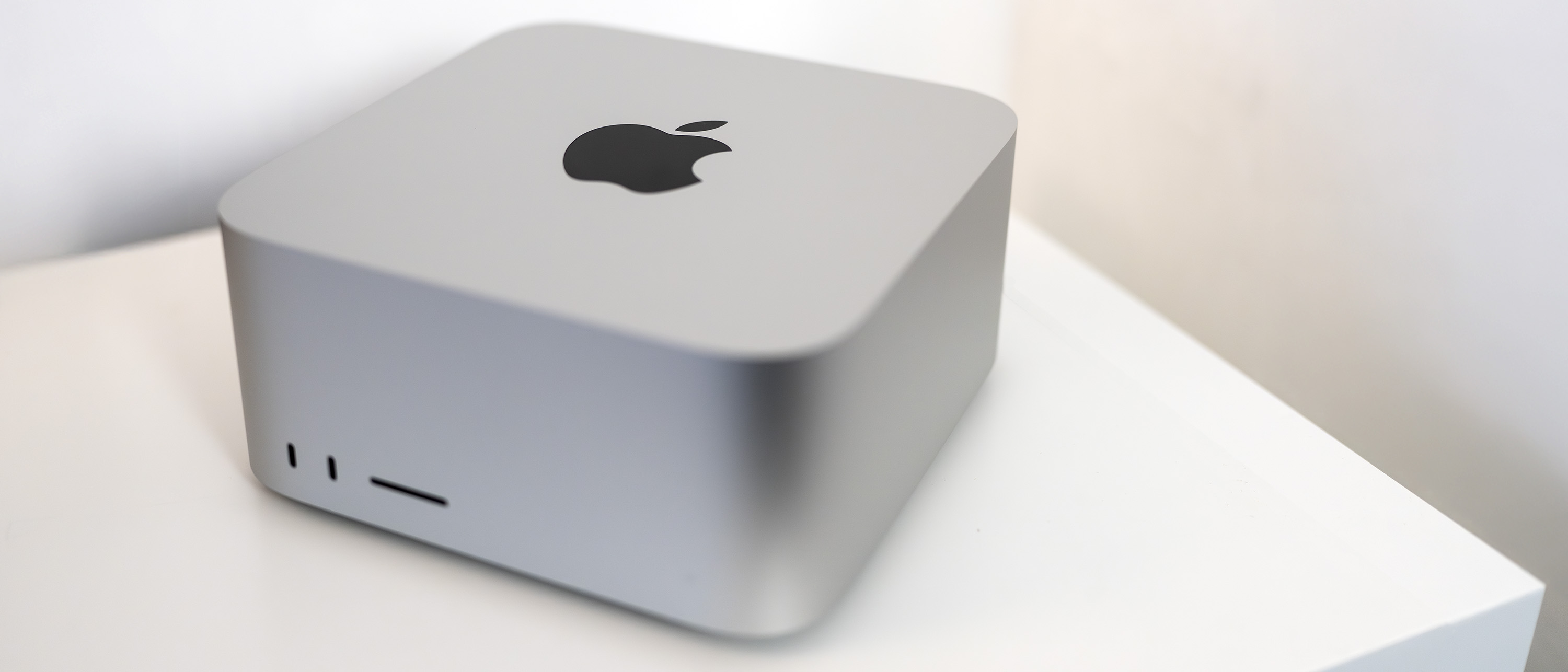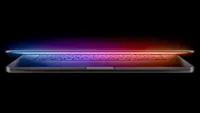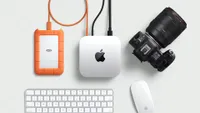Our Verdict
It’s not cheap, especially once you start adding options, but the Mac Studio M4 Max sees Apple’s best desktop get even better. It’s a heck of a lot of computer in a compact case, and if you can put it to work will blaze through any task you set it.
For
- Very powerful
- Compact and quiet
- Lots of fast ports
Against
- Rather expensive
- Niche appeal
- Not upgradable
Why you can trust Creative Bloq
Do you ever play the Apple Store game? It’s where you pick a Mac and add upgrade after upgrade, trying to get it to the highest price possible. The Mac Pro was always the king of this game, especially when Apple was offering things like Afterburner and fibre channel cards, but a Mac Studio can be built that costs over £14,000 before you start adding software.
That model comes with 512GB of RAM, which for those of us who once believed no one would need more than 640KB looks like an enormous number. The Mac Studio we have here for review has a much more reasonable 128GB alongside its 16-core M4 Max, with a 1TB SSD, but it’s still a complete monster in a compact outer shell that has to be the dream computer for any kind of creative work.
So, is it one of the best computers for video editing? Yes it is. Why? Read on.
Key specifications
CPU: | Apple M4 Max (16-core) |
NPU: | 16‑core Neural Engine |
Graphics: | Integrated, 40 cores |
Memory: | 128GB |
Storage: | 1TB SSD |
Ports: | 4x Thunderbolt 5, 2x USB 3 Type-A (5Gbps), 1x HDMI 2.1, 1x 10Gbps Ethernet, 3.5mm headphone jack; 2x USB-C (10Gbps, front), 1x SDXC reader (front) |
Wireless connectivity: | Wi‑Fi 6E, Bluetooth 5.3 |
Dimensions: | 9.5 x 19.7 x 19.7 cm |
Weight: | 2.74 kg |
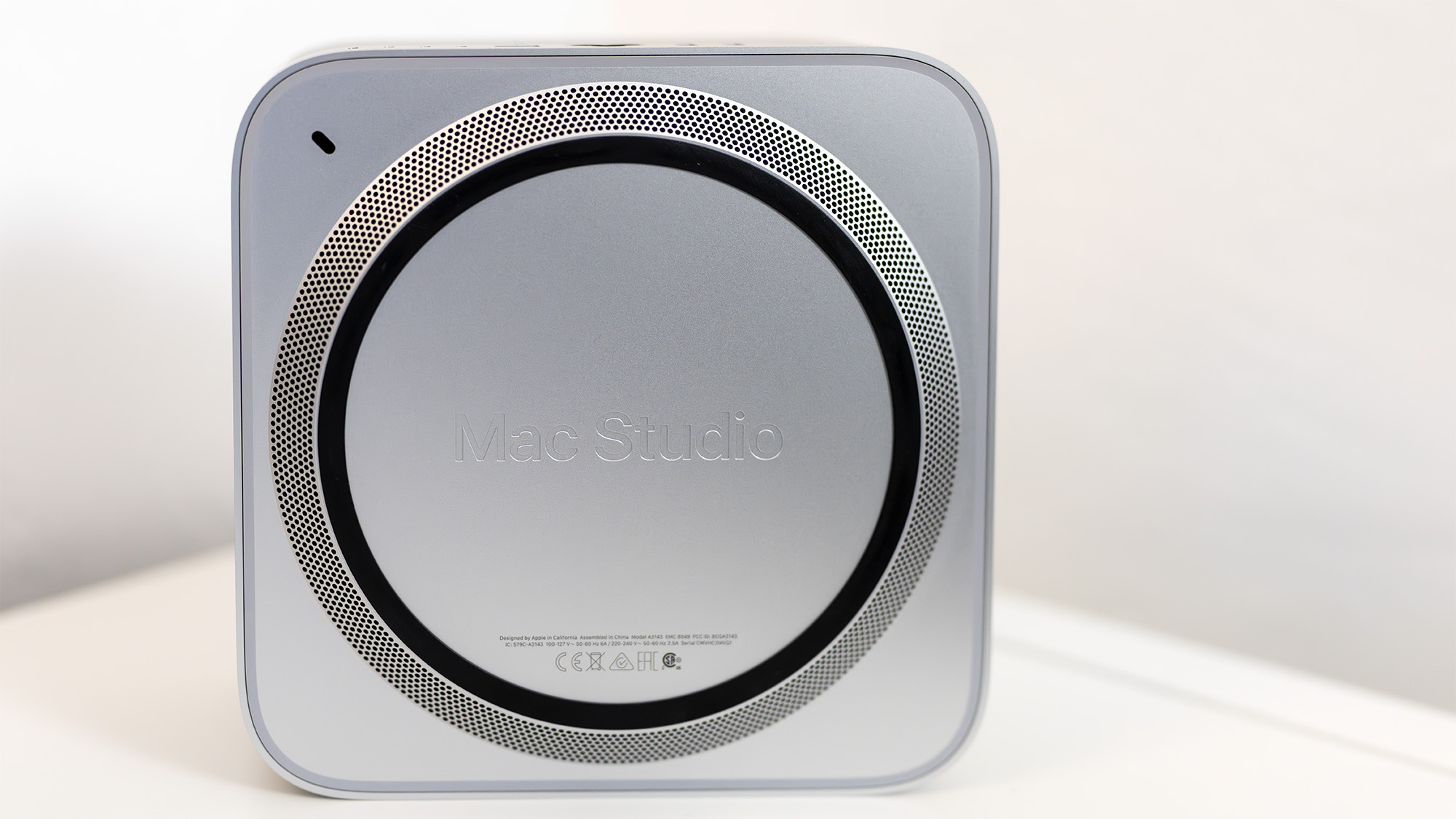
Design and build
• Excellent compact design
• Even comes in a nice box
If you’ve not encountered a Mac Studio before, it’s easy to think of it as a Mac Mini on steroids, spliced with the last remaining strands of the G4 Cube’s DNA in some secret California lab before being set loose on the world. It’s not, really, as it is bulkier in real life than it appears in photos. It has a heft and a presence the Mini can’t match, and while our memories of the Cube are hazy - it was last on our desk over 20 years ago - we don’t remember it being this wide. Perhaps it’s the Studio’s squat height that makes it appear denser.
At least it’s more accessible than either the Cube or the Mini. You don’t have to turn it over to press the power button, and the ports aren’t tucked away underneath like they were on the Cube. There's no grille at the top to release heat, and there are even two USB-C ports, an SD card reader at the front of the unit, and a power light. Start it up for the first time, and you get the requisite Mac chime - it’s a highly successful amalgam of hardware and software.
Apple’s packaging design in 2025 is also some of the best around. The tear strips on the boxes that allow easy access while letting you see at a glance if it’s been previously opened or not are fun, as is the carrying handle built into the top of the Studio’s box, so that you can leave the Apple Store and show everyone in the street what you’ve just bought, is cute but of questionable utility, like the handle built into the Nintendo GameCube.
Daily design news, reviews, how-tos and more, as picked by the editors.
The box flaps open to reveal the Studio wrapped in protective paper (as is the power lead, which is a lovely combination of flexible and tough) and as you peel it off there's a feeling of chinky solidity about the whole experience. You’ll marvel at the Studio when you reveal it, and while that might sound trite, we don’t want to get so jaded that we don’t feel something on unboxing a new computer like this.
Design score: 5/5
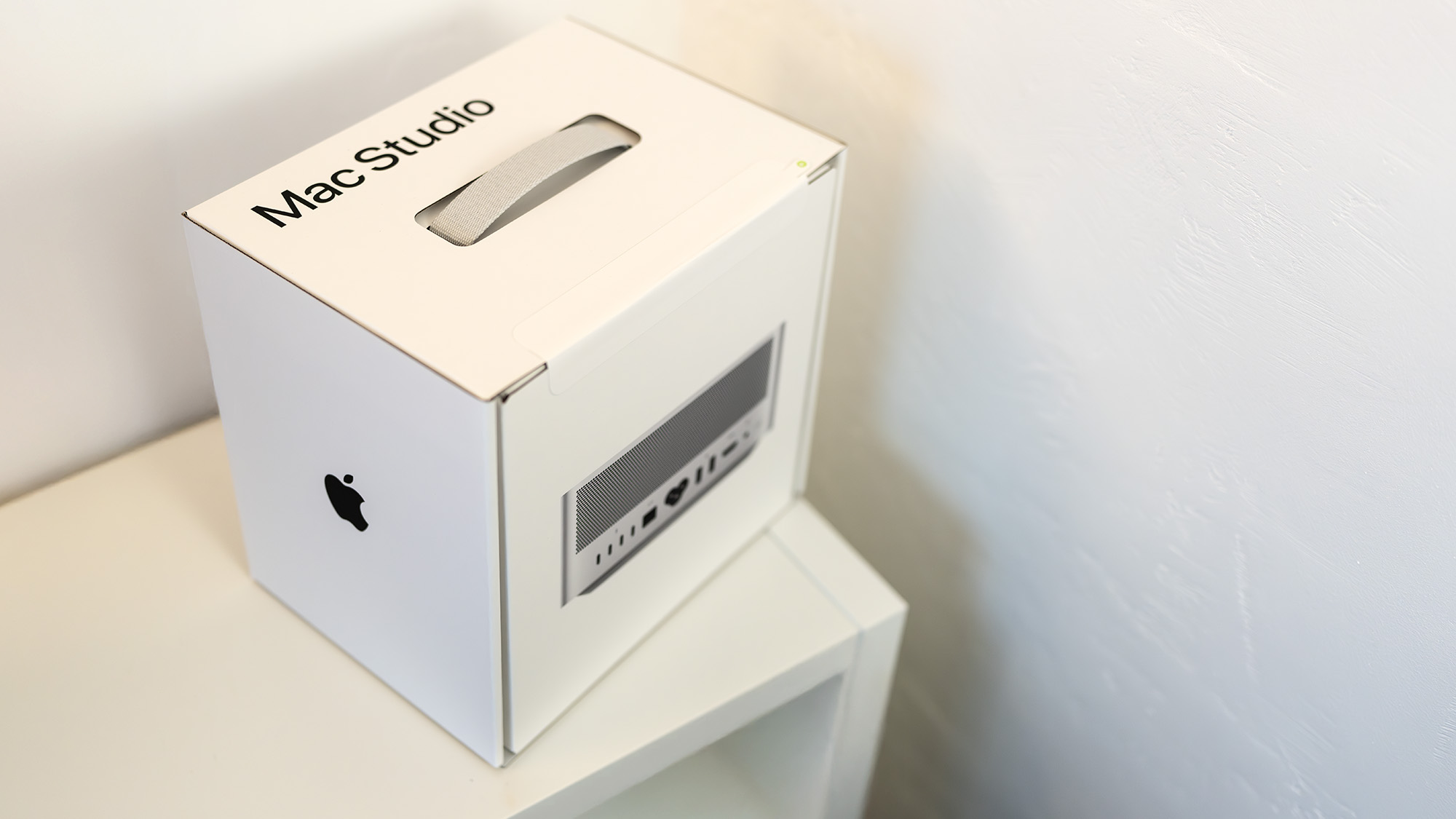
Features
• Lots of Thunderbolt ports
• Not upgradable after purchase
As a desktop machine, the Mac Studio isn’t expected to move much, so having some ports on the front is an excellent decision. The front USB-C ports may not be Thunderbolt 5 (you need the M4 Ultra version for that) but 10Gbps is plenty fast enough for most things. Having so many Thunderbolt 5 ports (plus an HDMI) around the back means the Studio’s party trick is being able to output to up to five external displays at the same time, which should be enough for anyone.
A lot of the cleverness of the modern Mac comes down to its operating system, which can take a little getting used to if you’re a regular Windows user (Apple’s merging of mouse and trackpad preferences means the backwards ‘natural’ scrolling, which makes sense on a laptop, is switched on for a mouse by default, sending us into a fury of Settings app panes to change it) but overall is a sleek and well made place to spend your time.
Apple Intelligence is integrated, though you can choose at setup whether you want to switch it on or not. While the writing tools may be useful if you’re sending a lot of emails, and the ability to summarise notifications can be handy if you’re trying to work and keep getting interrupted by things you need to read, they’re not something that will cause you to buy this particular Mac over a Windows machine.
One thing about the compact Macs is their complete lack of upgradability. Gone are the days when you could split a Mac Mini open with a wallpaper scraper - or unscrew the bottom of the newer models - to upgrade the RAM or replace an ailing hard drive with a shiny new SATA SSD.
For a machine that should be expected to last several years, a bit of future-proofing is a good idea, and while you can add extra storage via Thunderbolt, you can’t do the same for RAM. The base model 14-core M4 Max Studio comes with 36GB of memory, split between system and graphics, and while Apple’s memory management software is second to none, boosting this to the next level (48GB, also the base amount for the M4 Max with 16 cores) or adding £200 to get to 64GB sounds like a much better idea.
The 512GB model is aimed at those using memory-hungry LLMs or AutoCAD projects, and it’s probably overkill even for video editing and 3D work, and sticking to 128GB helps keep the price down too.
Feature score: 3/5
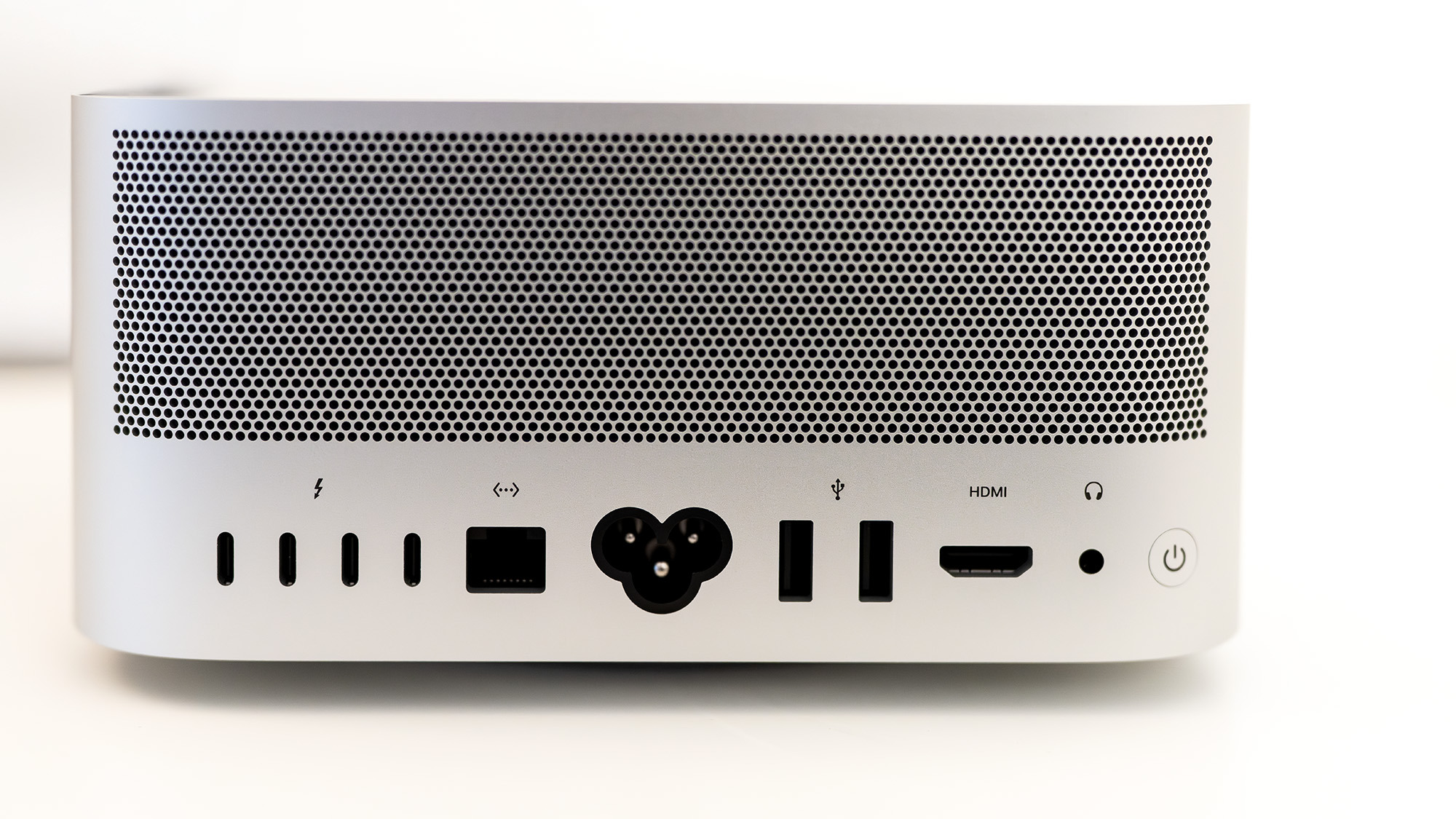
Benchmark scores
We test every one of our laptops using the same benchmarking software suite to give you a thorough overview of its suitability for creatives of all disciplines and levels. This includes:
• Geekbench: Tests the CPU for single-core and multi-core power, and the GPU for the system's potential for gaming, image processing, or video editing.
• Cinebench: Tests the CPU and GPU's ability to run Cinema 4D and Redshift.
• Topaz Video AI: We use Topaz Video AI to test the system's ability to upscale video and convert video to slow-motion.
• PugetBench for Creators: We use the PugetBench for Creators benchmarking suite to test the system's ability to run several key tasks in Photoshop and DaVinci Resolve Studio, as well as its performance when encoding/transcoding video.
• ON1 Resize AI: Tests the system's ability to resize 5 photos to 200% in a batch process.
Testing suite | Test name (higher is better unless specified) | Apple Mac Studio M4 Max | HP OMEN 35L | MacBook Air M4 |
|---|---|---|---|---|
GEEKBENCH 6 | CPU Single-core: | 4037 | 3019 | 3721 |
| Row 1 - Cell 0 | CPU Multi-core: | 26,070 | 19,397 | 14,866 |
| Row 2 - Cell 0 | GPU OpenCL: | 114,523 | 245,249 | 34,868 |
CINEBENCH 2024 | CPU single-core: | 189 | 131 | 173 |
| Row 4 - Cell 0 | CPU multi-core: | 2099 | 1806 | 736 |
| Row 5 - Cell 0 | GPU: | 16,697 | 26,194 | 3867 |
TOPAZ VIDEO AI | Enhancement: | 55.24 | 117.67 | 24.94 |
| Row 7 - Cell 0 | Slowmo: | 141.53 | 337.48 | 46.77 |
| Row 8 - Cell 0 | Combined: | 884.23 | 1992.79 | 341.56 |
ON1 RESIZE | 200% resize time (lower is better): | 31,995.8ms | 7135ms | Row 9 - Cell 4 |
Overall: | 13,912 | 8924 | Row 10 - Cell 4 | |
| Row 11 - Cell 0 | General: | 120 | 90.3 | 99.1 |
| Row 12 - Cell 0 | Filter: | 74.8 | 88.2 | 106 |
Overall: | 8764 | 9742 | 3124 | |
| Row 14 - Cell 0 | GPU Effects: | 74.8 | 104 | 14.7 |
| Row 15 - Cell 0 | Fusion score: | 106 | 87.5 | 39.1 |
| Row 16 - Cell 0 | AI score: | 43.1 | 101 | 16.3 |
| Row 17 - Cell 0 | H.264 encoding: | 94.86fps | 112fps | 202.94fps |
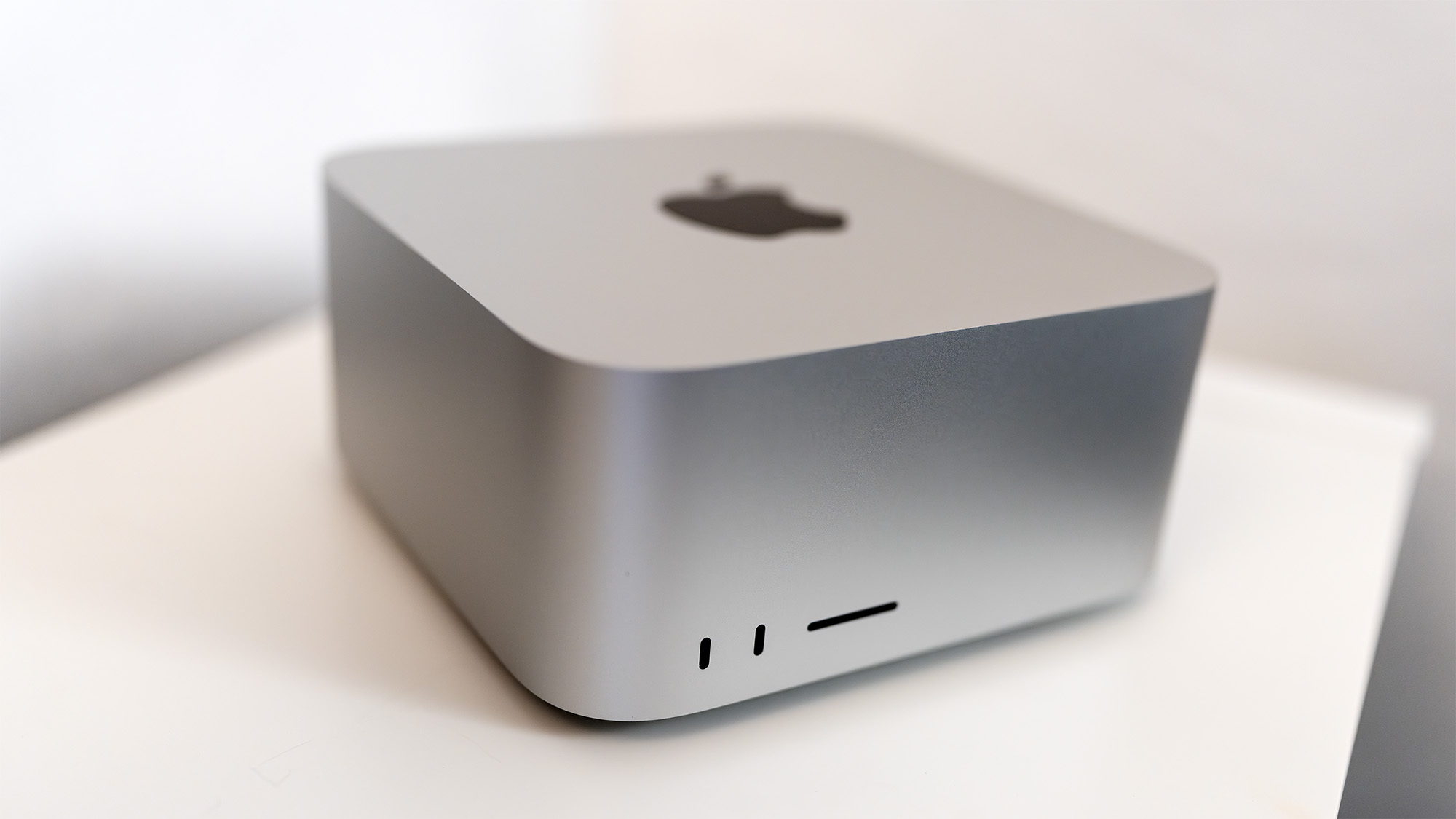
Performance
• Lots of power
• Cool and quiet
The Cinebench 2024 GPU score puts the M4 Max’s pixel-pushing power right between the desktop versions of the GeForce RTX 4060 and RTX 4070 Super cards, way ahead of even the best integrated graphics solution such as the AMD Radeon 8050S in the Asus ROG Flow Z13. In the same test, the M4 Max’s multi-core performance is more than four times better than the Intel Core Ultra 7 265V (an eight-core laptop chip), and also beats the Intel Core Ultra 7 265K in the HP Omen 35L gaming PC (a 20-core desktop chip) though only by a little. It's a remarkable result for such a small machine without the benefit of heavy-duty cooling. There is an internal fan at work in the Studio, but you’d never know it under normal workloads.
When it comes to creative apps, the M4 Max stacks up well against other computers. Because of course it does. While the MacBook Air M4 wasn’t too far behind the MacBook Pro M4 in our tests, the Mac Studio M4 Max takes the lead and heads for the horizon. It posts a score in Topaz Video AI that’s more than double that of the Apple laptops, and is only beaten by Windows machines running the very latest Nvidia cards. In DaVinci Resolve Studio it’s only a tiny bit behind a PC using an RTX 4080 Super 16GB, beating the performance of an RTX 4060 Ti, and the same is true in Photoshop, where the M4 Max comes up just lower than the HP Omen 35L, which is a much larger and noisier (though slightly cheaper) machine.
While jumping through hoops for our tests, the Mac Studio stayed almost silent. If the fan was running inside that monolithic exterior, we didn’t notice it over the usual CB Towers soundtrack of an office fan and the birds chirping outside the window.
Performance score: 5/5
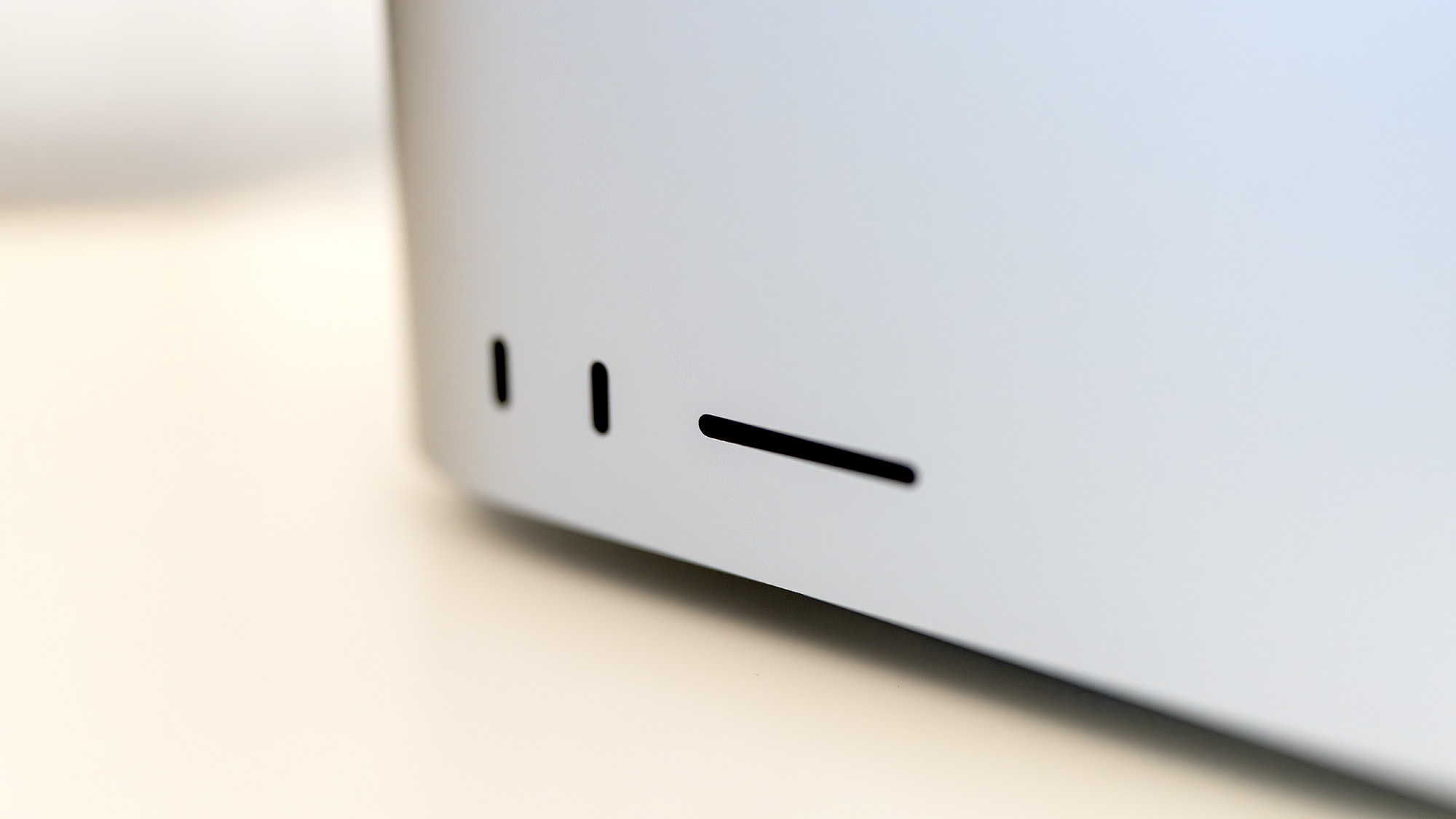
Price
Excellent performance like this always comes at a price, as does the kind of compact design and efficient cooling that make the Mac Studio such a joy to have on your desk. The base model comes in at $1,999/£2,099, but the version I tested would set you back $3,699/£3,799 before discounts.
You could opt for a Windows machine with a potent graphics card, and have the same kind of brute-force rendering for a lower cost, but you’d miss out on the finesse that Apple has brought to the desktop computer space with both its hardware design and its operating system.
Value score: 3/5
Who is it for?
• Video editors and power users
As the creative’s dream computer, it’s suitable for anyone who moves pixels about and makes things look good. It’s overkill for many situations - Photoshop will run almost as well on much cheaper machines, as will a web browser - but if you’re video editing, rendering, using AI or perhaps doing all three things at once, the Mac Studio is one of the best desktop PCs around.
Attributes | Notes | Rating |
|---|---|---|
Design: | Looks amazing on any desk. | 5/5 |
Features: | Lots of fast ports, but not upgradable. | 3/5 |
Performance: | The best Mac around, immense power for the size. | 5/5 |
Value: | Expensive, and gets geometrically more so with every upgrade added. | 3/5 |
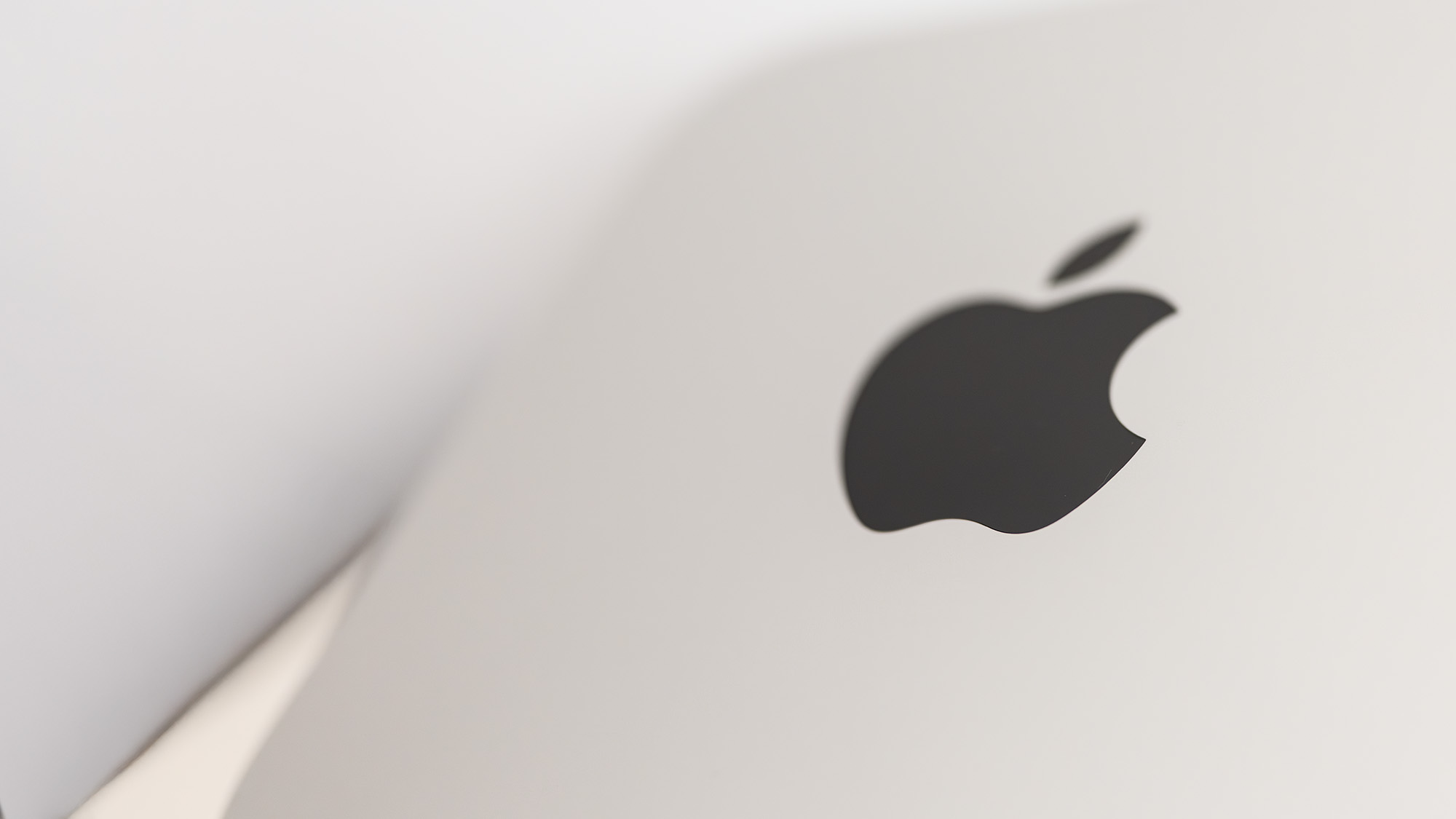
Buy it if...
- You can afford it
- You need it
- You like Macs
Don't buy it if...
- You’d rather have a laptop
- Or a Windows machine
- Or anything cheaper
Also consider
Apple MacBook Pro M4
It's incredibly well built, the screen is predictably great and it's loaded with a bunch of ease-of-use features for anyone, plus the addition of Apple Intelligence adds an AI-shaped layer to the experience of having one.
HP Omen 35L
HP has loaded this Omen 35L gaming PC with the latest tech, and it will help anyone who renders, edits or encodes to save time in their workloads. It’s expensive, but the capability it will bring makes it well worth the outlay.
Apple Mac Mini M4
Small but mighty, powerful but affordable, the latest Mac mini is Apple best value proposition, and everything most creatives will need on an everyday basis.
out of 10
It’s not cheap, especially once you start adding options, but the Mac Studio M4 Max sees Apple’s best desktop get even better. It’s a heck of a lot of computer in a compact case, and if you can put it to work will blaze through any task you set it.

Ian Evenden has been a journalist for over 20 years, starting in the days of QuarkXpress 4 and Photoshop 5. He now mainly works in Creative Cloud and Google Docs, but can always find a use for a powerful laptop or two. When not sweating over page layout or photo editing, you can find him peering at the stars or growing vegetables.
You must confirm your public display name before commenting
Please logout and then login again, you will then be prompted to enter your display name.
